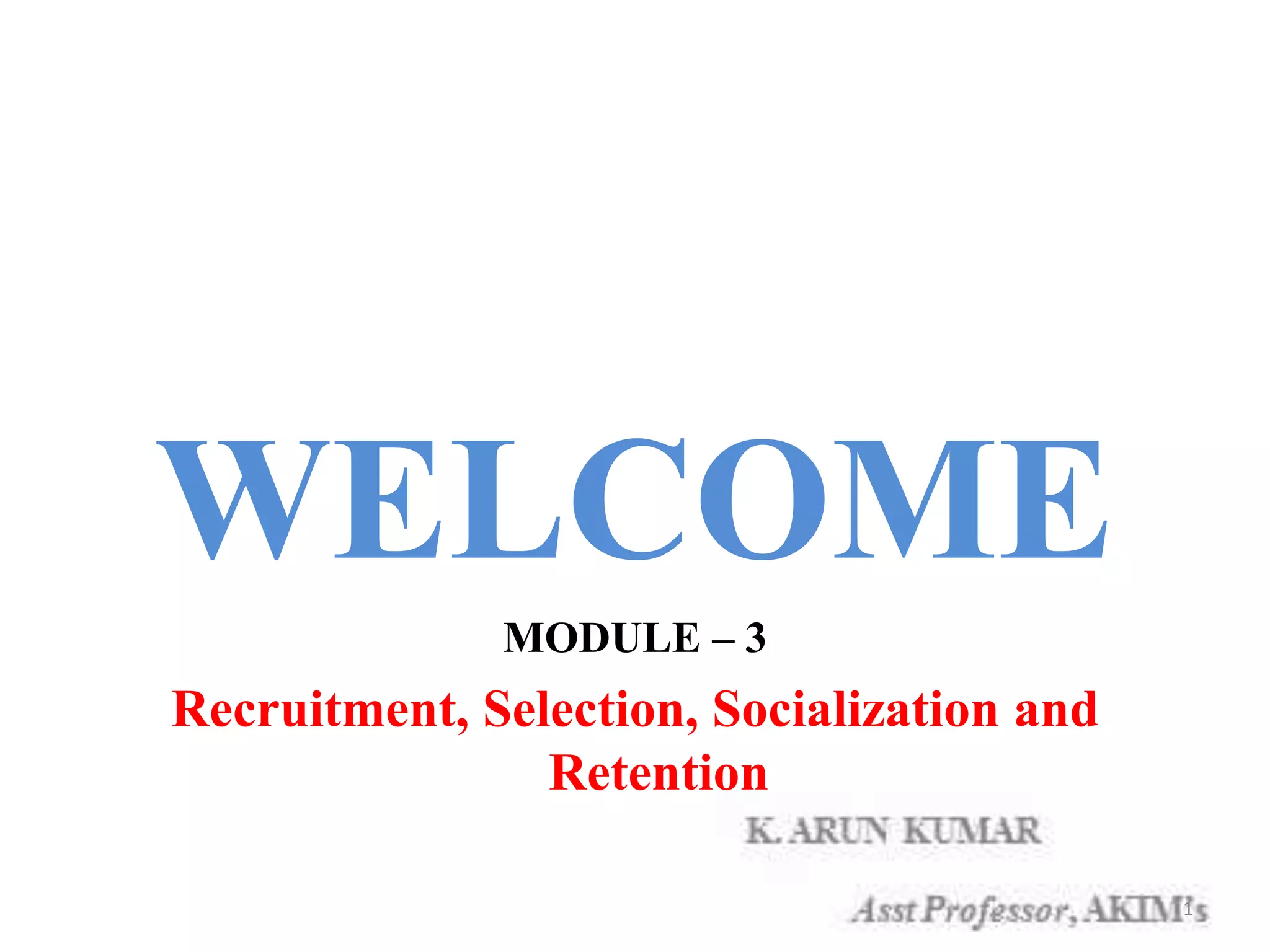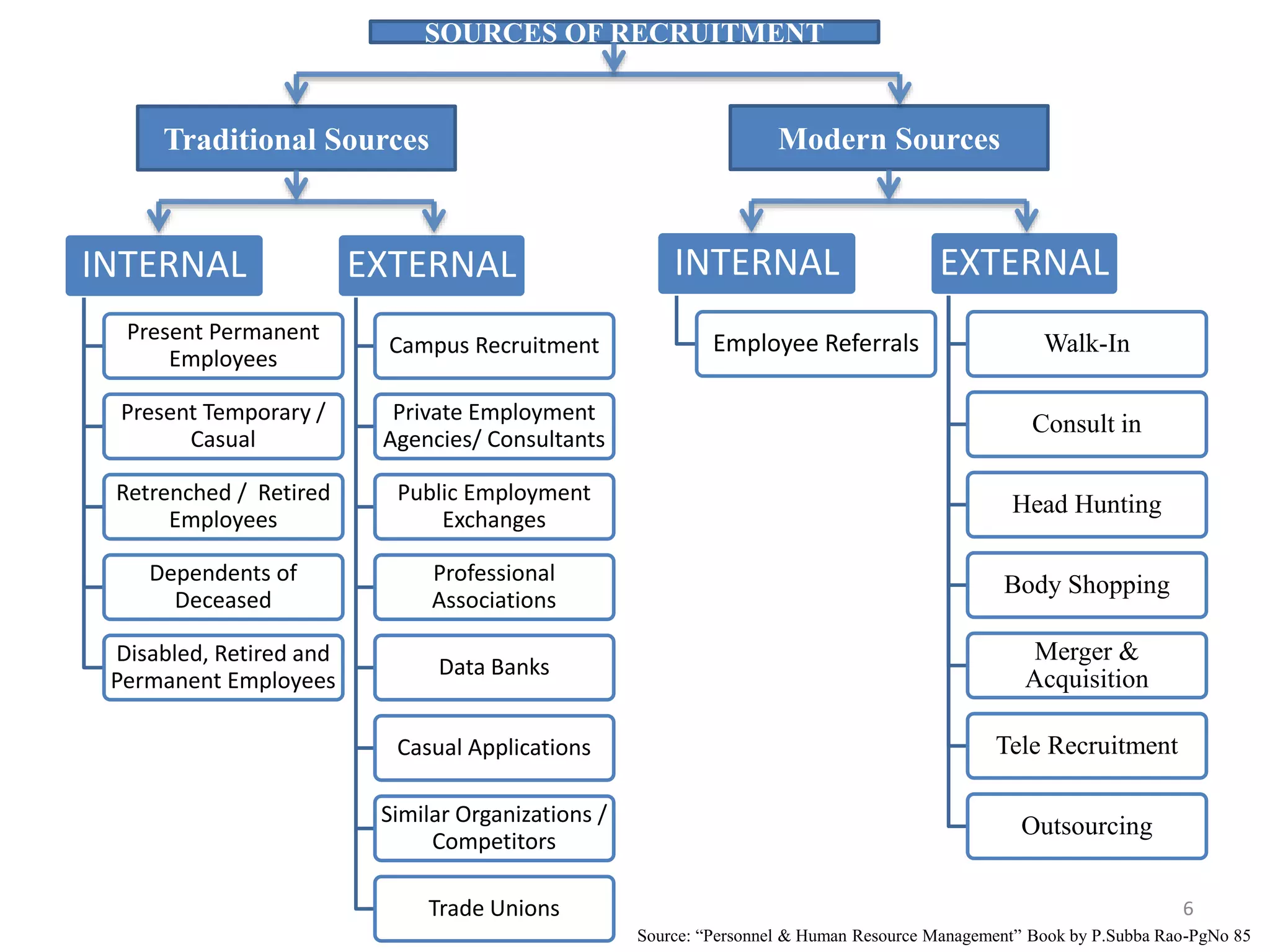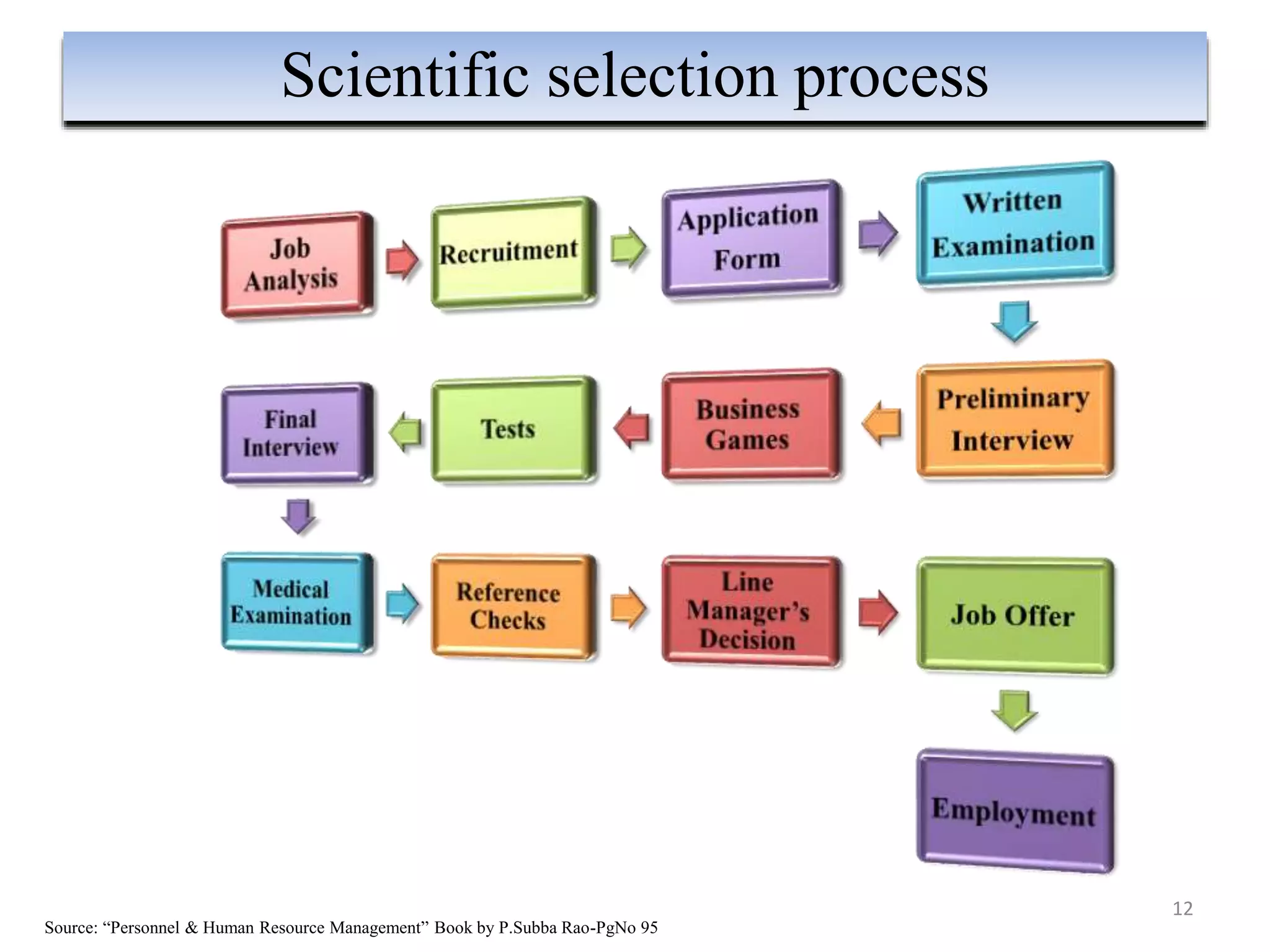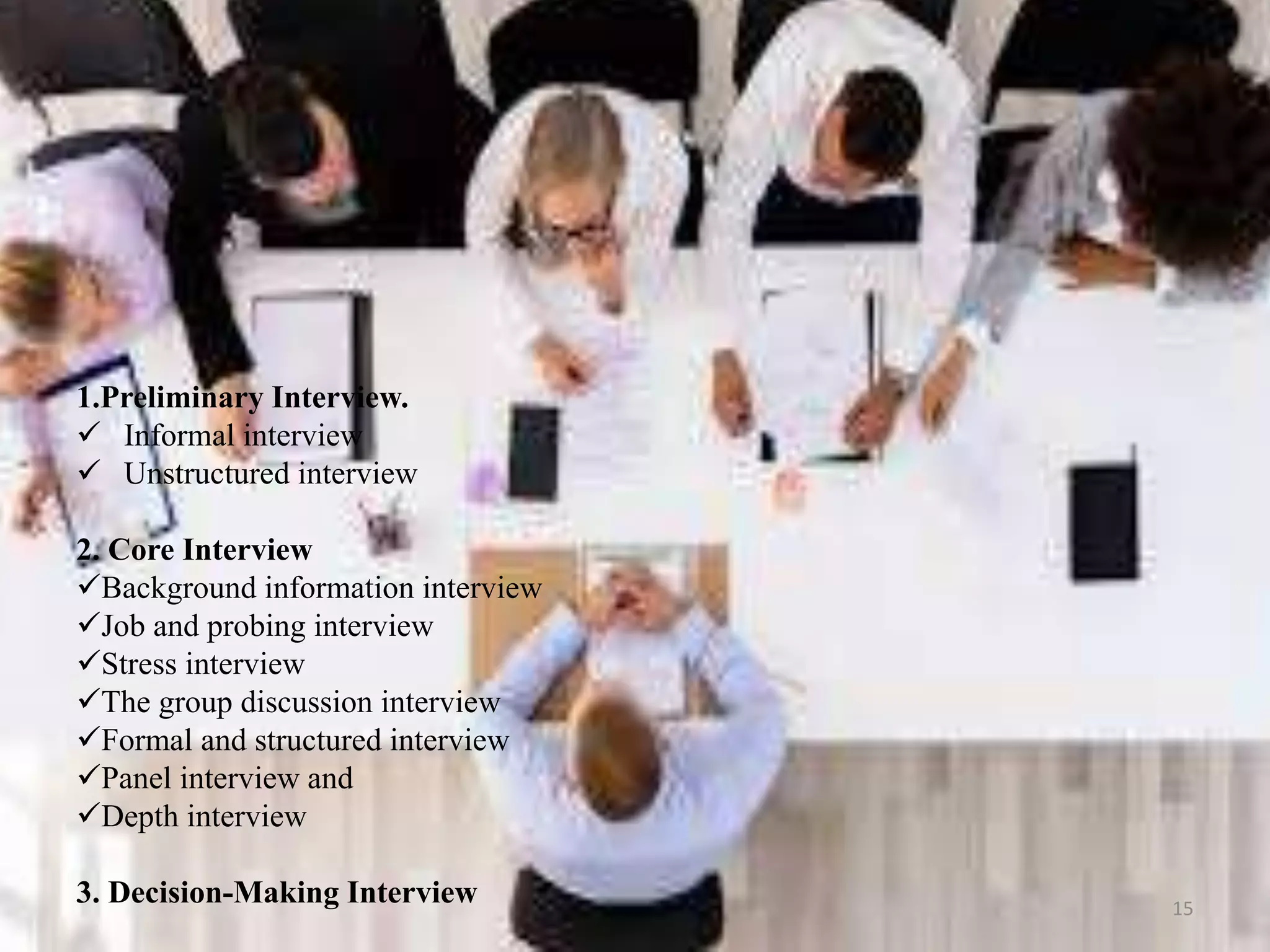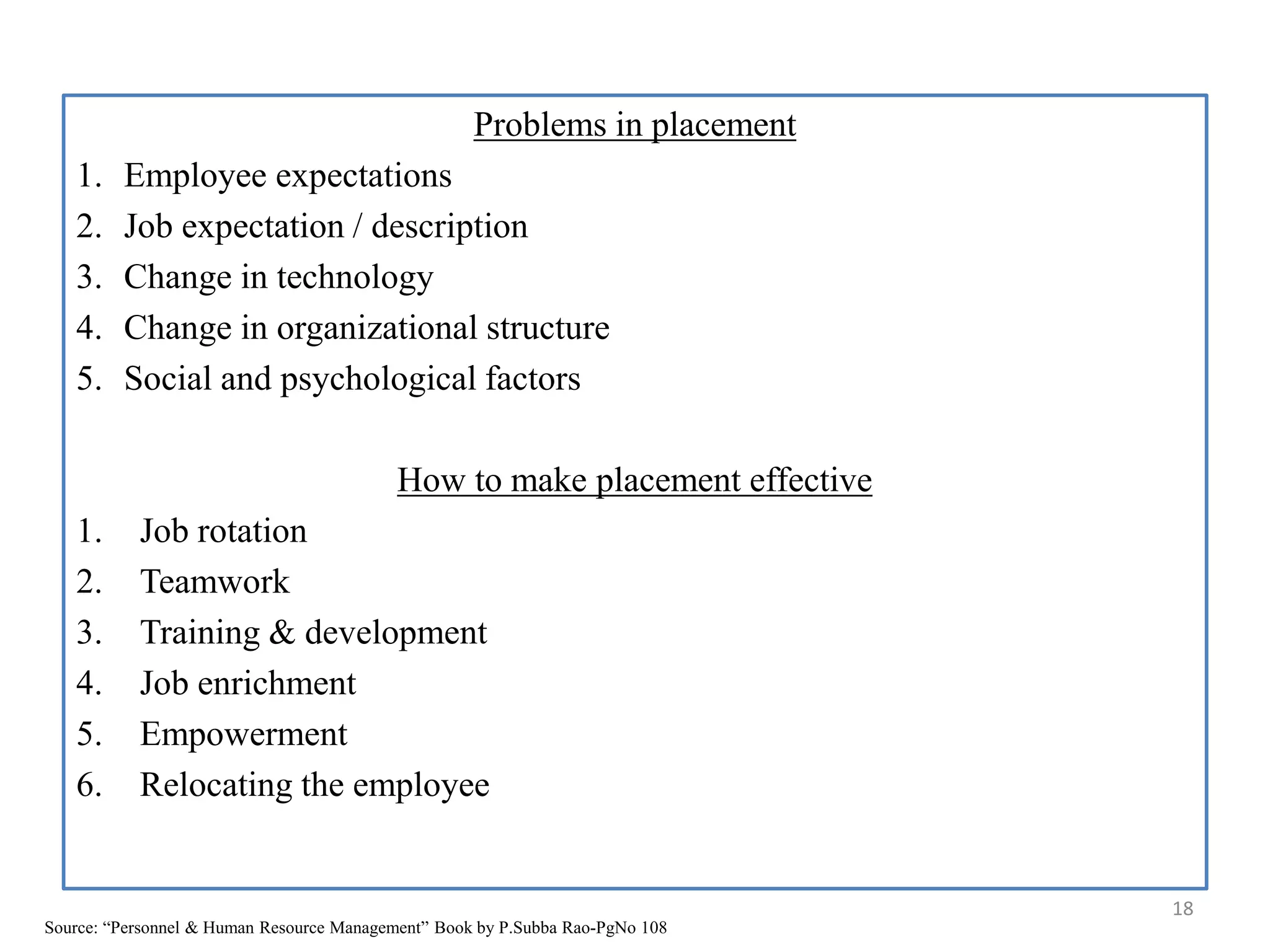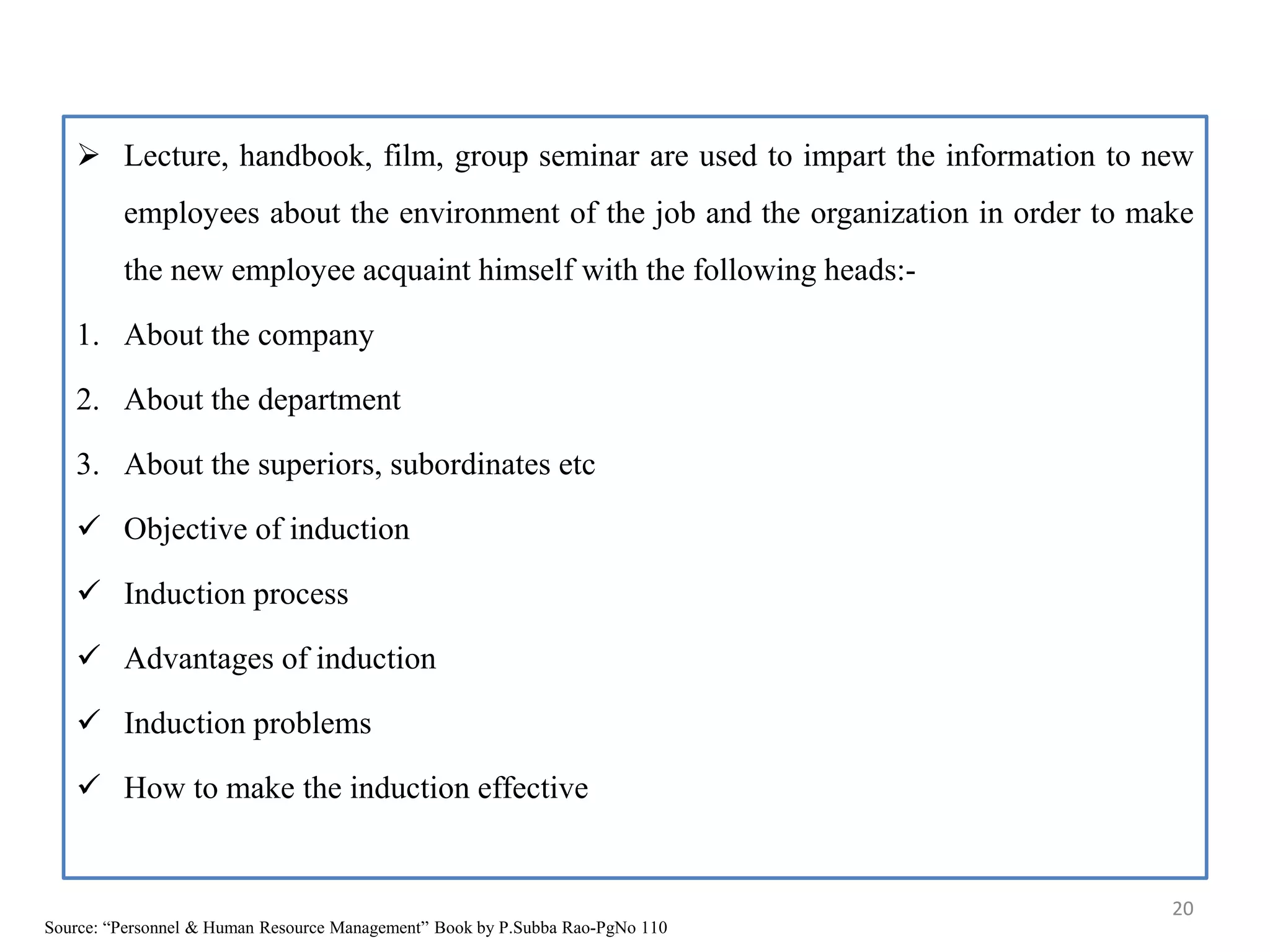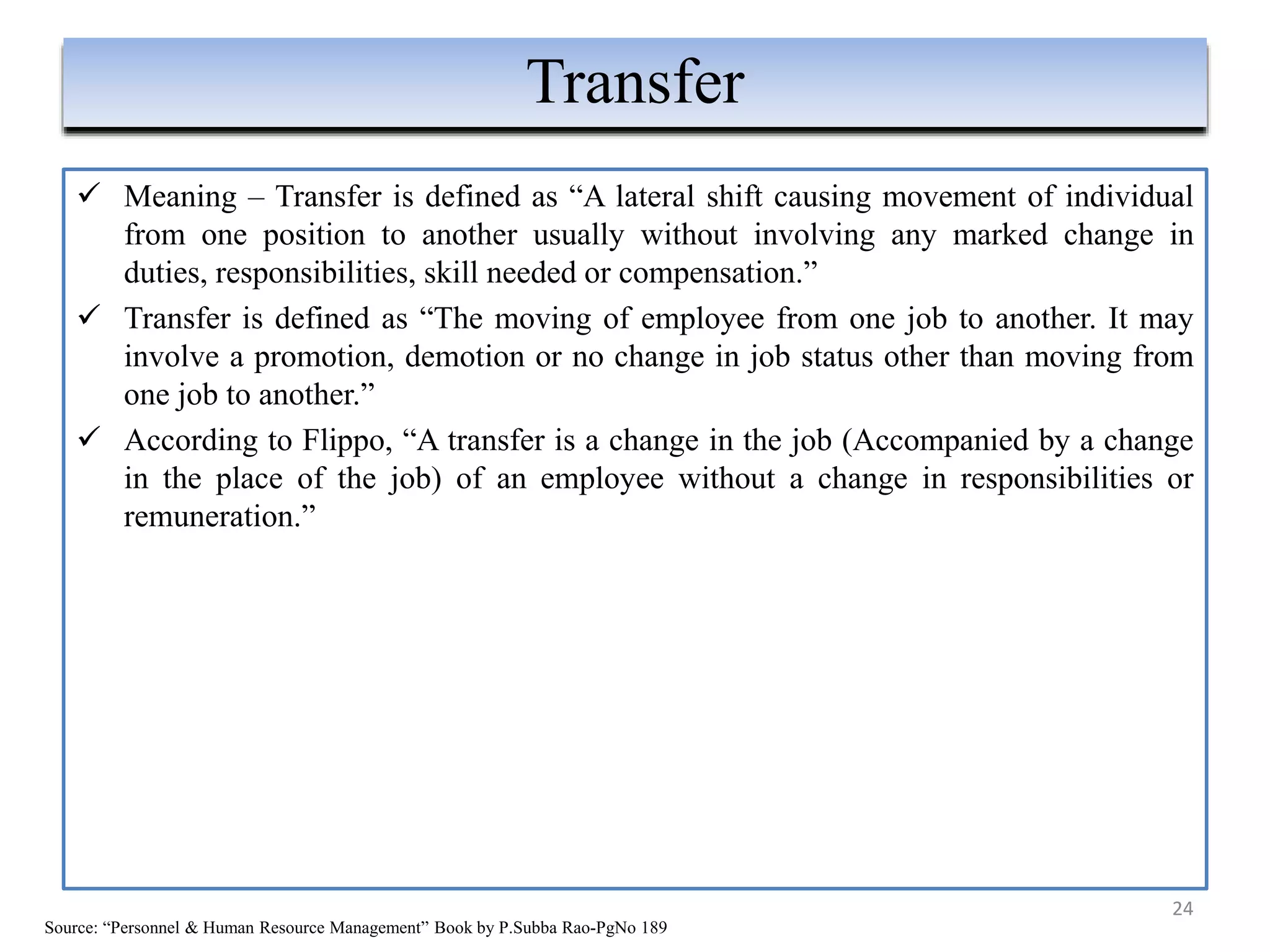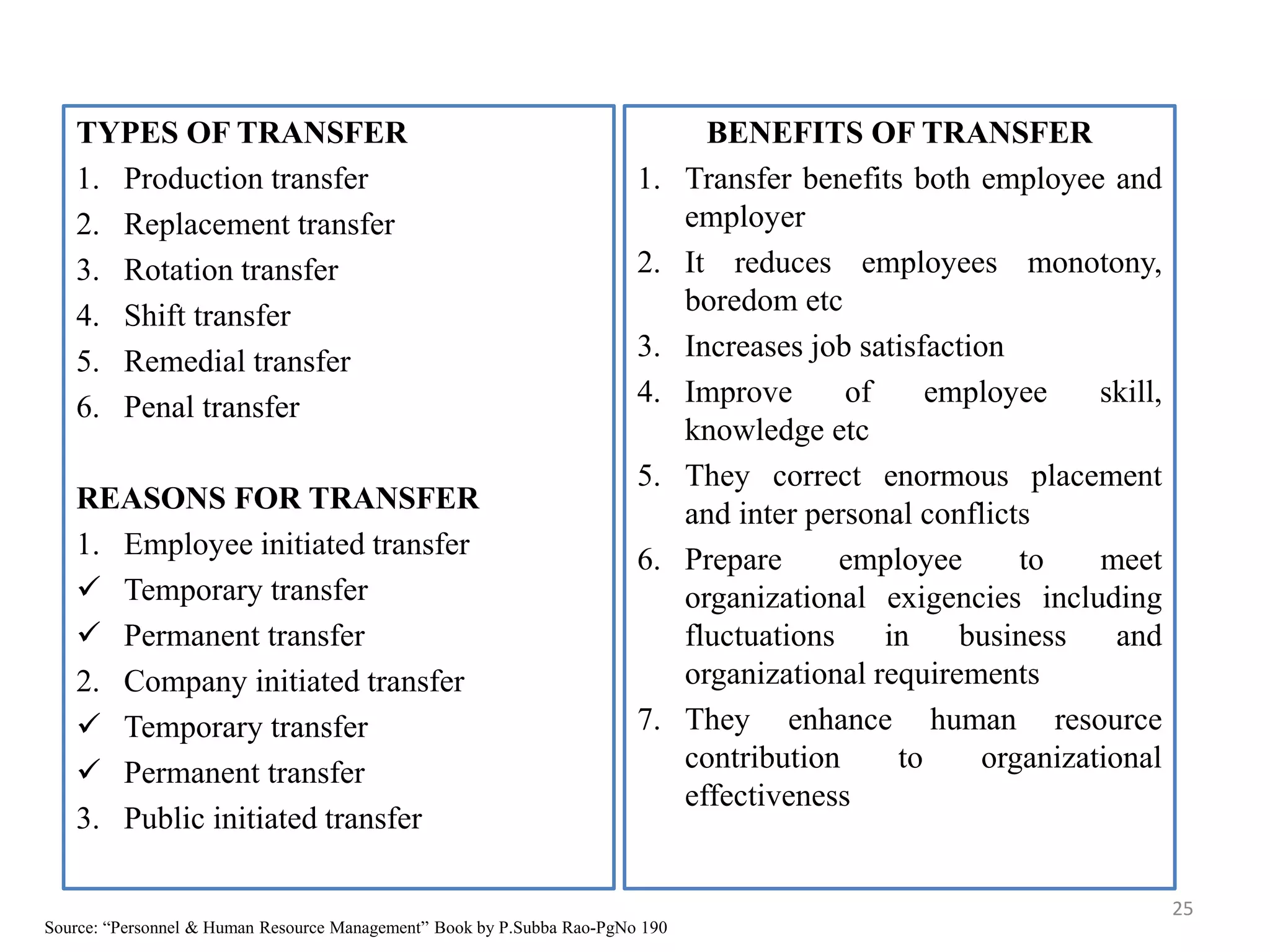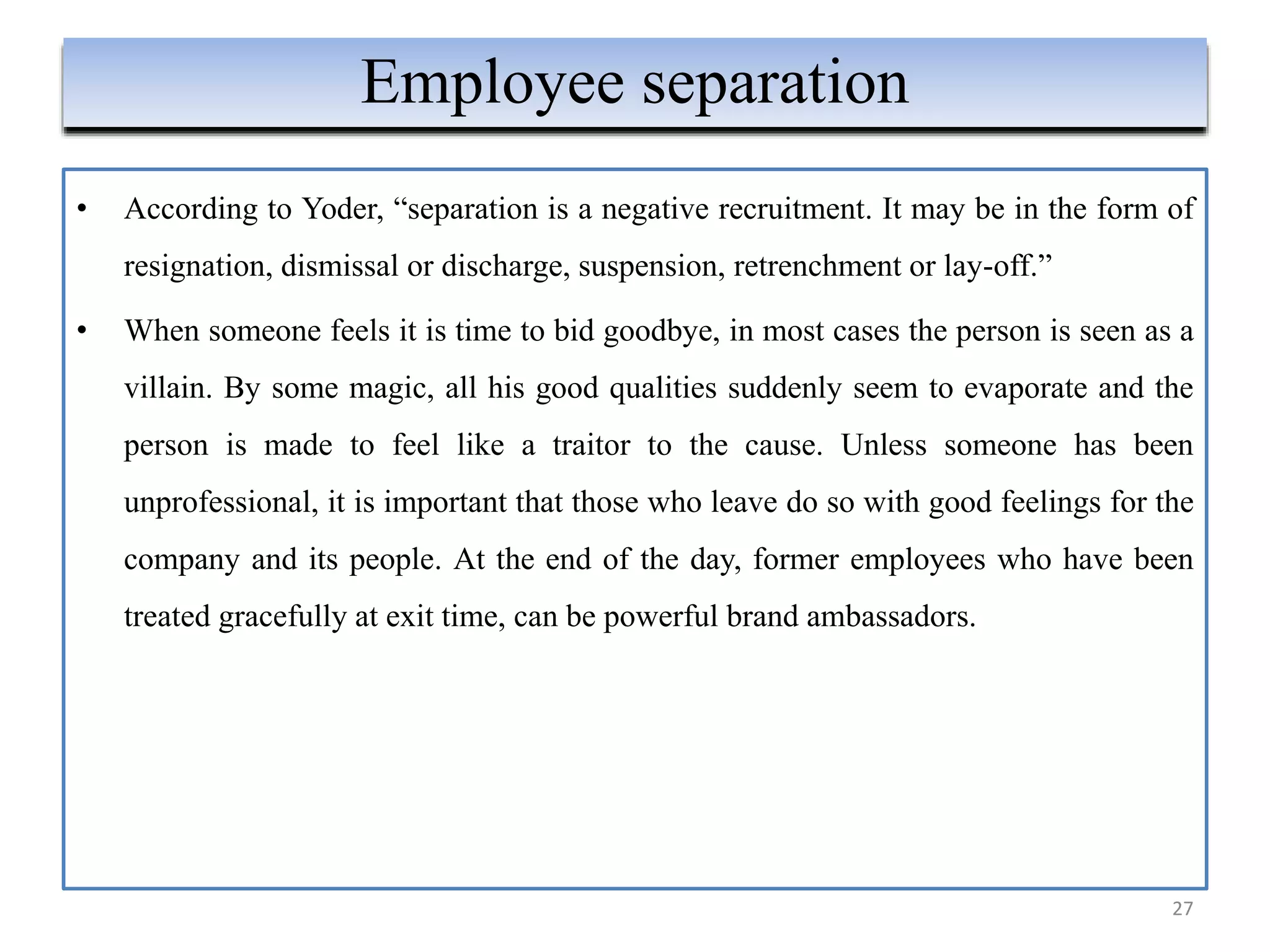The document discusses the processes of recruitment, selection, socialization, and retention within organizations, detailing definitions, sources, methods, and challenges related to each phase. It emphasizes the importance of aligning candidates' abilities with organizational objectives and highlights the benefits of both internal and external recruitment sources. Additionally, the document addresses placement, induction, promotion, transfer, demotion, and employee separation, providing insights into practices that foster effective human resource management.
